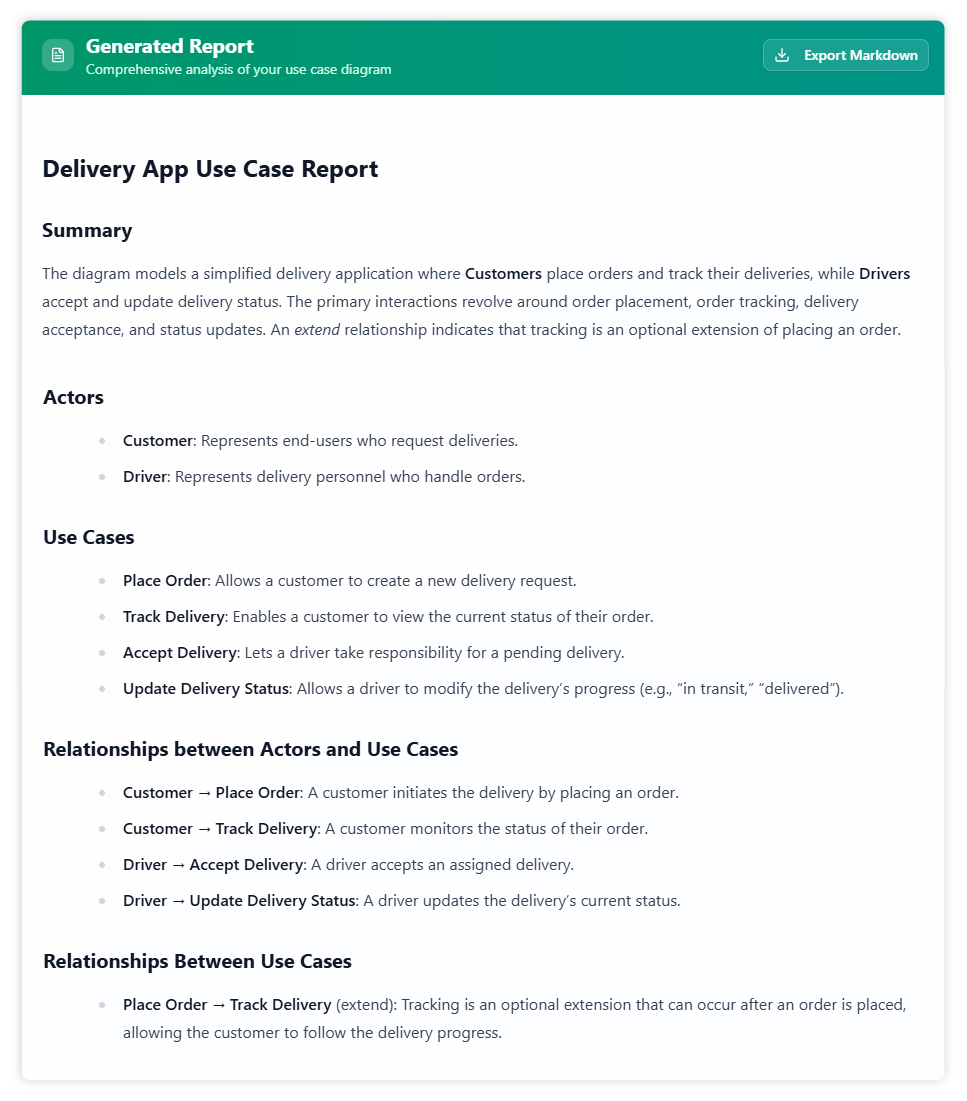Now Reading: What Are Use Case Diagrams – AI-Driven Tool Guide
-
01
What Are Use Case Diagrams – AI-Driven Tool Guide
What Are Use Case Diagrams – AI-Driven Tool Guide
If you’re a student in a computer science or IT class, you’ve probably heard of “use case diagrams.” They might sound complicated, but the idea behind them is actually very simple. Let’s break it down.
The Basics: Actors and Use Cases
Imagine you’re ordering food from a delivery app. In this scenario, you are the main character. You perform actions like browsing restaurants, adding a pizza to your cart, and checking out. A use case diagram is just a simple drawing of this process.
- Actors: These are the “who.” An actor is anyone or anything that interacts with the system. In our example, you are an actor. The delivery driver is another actor.
- Use Cases: These are the “what.” A use case is a specific action an actor performs. “Order Food,” “Track Delivery,” and “Make Payment” are all use cases.
That’s it! A use case diagram connects actors (stick figures) to use cases (ovals) to show who can do what in a system. It’s a blueprint that helps everyone understand what a software application is supposed to do without getting lost in technical details.
A simple diagram showing a Customer (actor) who can Order Food (use case):

The Challenge for Students: From Diagram to Report
Drawing the diagram is often the fun part. The hard part comes next: writing a detailed report that explains everything. Your professor wants a document that describes all the actors, explains each use case, and lists all the relationships. This can take hours of tedious work, pulling you away from studying the actual concepts. You have to manually write things like:
“The Customer actor interacts with the Order Food use case. This use case is extended by the Apply Coupon use case…”
Doing this for a complex diagram is time-consuming and prone to errors.
How Our Tool Is a Game-Changer for Students
This is where the Use Case Diagram Report Generator comes in. It’s designed to eliminate that boring, manual work. Instead of writing a report from scratch, you can focus on getting the diagram right.

Here’s how it helps:
- Write Simple Code: You write your diagram in PlantUML, which is a very easy-to-learn text format.
- Get an Instant Report: With one click, our tool’s AI analyzes your code and generates a complete, well-structured report.
- Everything Included: The report has it all: a title, a high-level summary, detailed descriptions of actors and use cases, and a clear list of all relationships.
Instead of spending hours writing, you get a perfect report in seconds. This means you can focus on what really matters: understanding the principles of system design and acing your exams. It’s the ultimate study buddy for any tech student.

